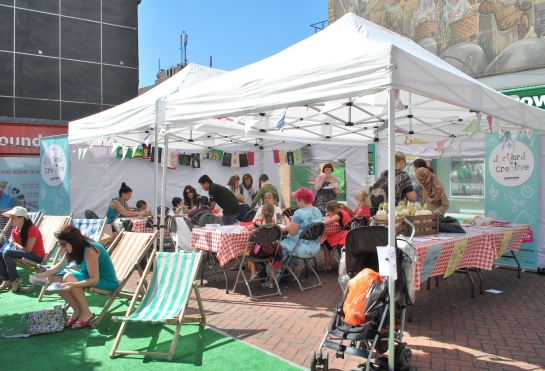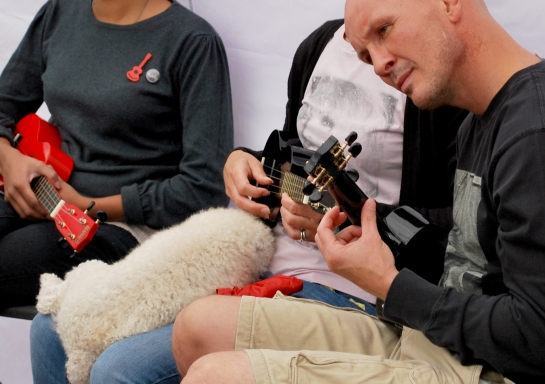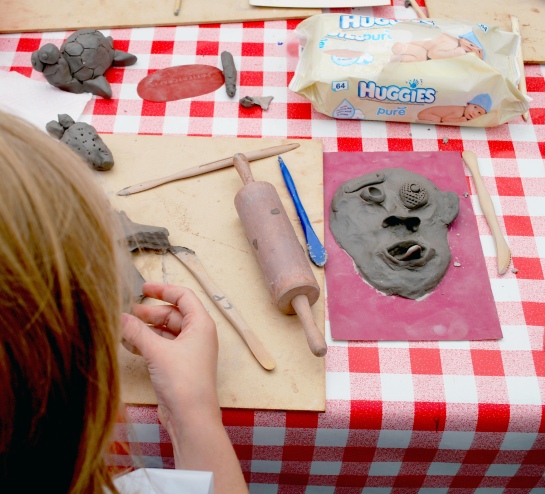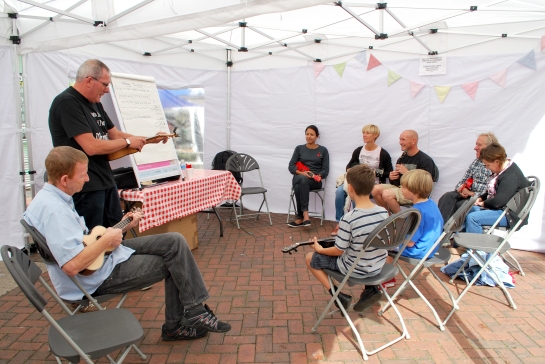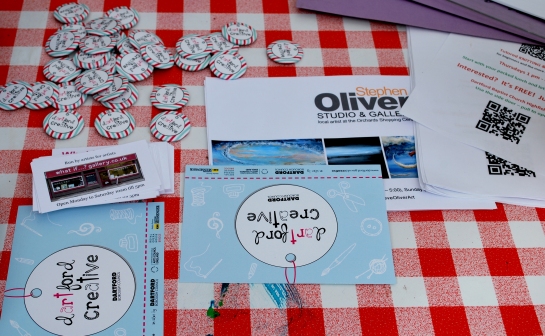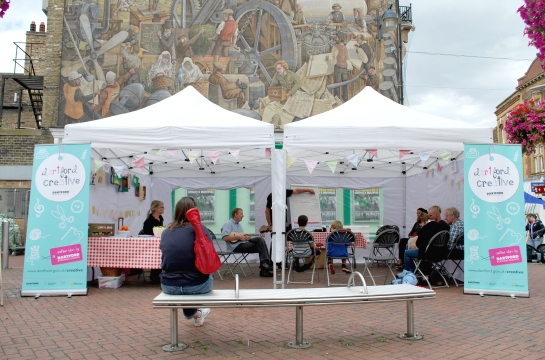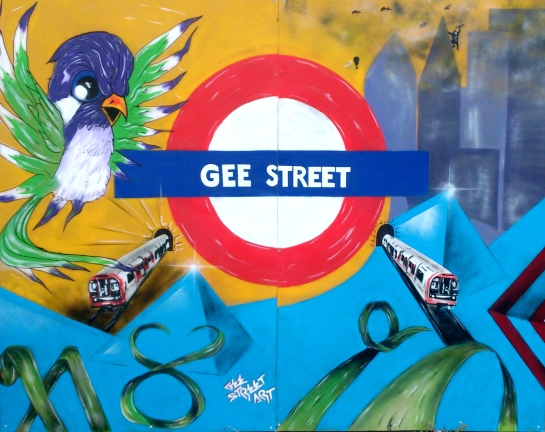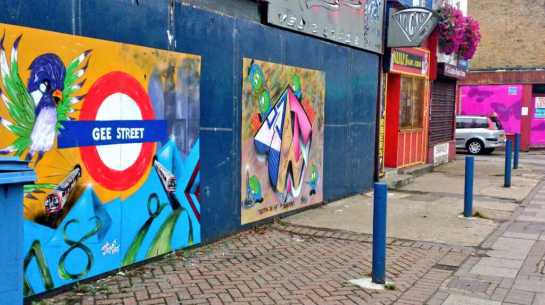I’d heard of the Wapping Project before. As someone interested in the arts in London, it was almost hard not to. Exclamation at it’s evident all-round brilliantness gushed from every source, über-cool reviewers and members of various ‘in-crowds’ chattered excitedly about its innovative programme and siting. But inevitably, like a million other must-sees in and around London over the years, I had always failed to actually get there and consequently, regrettably, allowed it to drift from my subconscious to-do list. In a sadly ironic twist it’s impending closure means that I did finally manage to visit, after receiving last week an email from the project’s deputy director Marta tempting me with the sale of various jugs/bowls/glasses at bargain prices. The reason for the kitchenware sell-off being that the renowned restaurant based there, along with the rest of the project, will be no more after 22nd Dec, with reports claiming that complaints from residents about noise levels has forced the shutdown. Complaints about the complaints have also been voiced in increasing number, with creatives across the city mourning the looming date of its disappearance. On a brighter note of self-interest, this situation did mean that moi managed to swiftly baggsie myself a few cut-price treasures for my kitchen cupboards (every cloud and all that).
And so it was that I found myself, on a damp, dark Thursday eve in December arriving at Wapping, it being an attractively strange place oozing history and character in that nouveau-classy manner of much of the east docklands area; the palpable taste of new money ‘a la Shad Thames refurbed wharf architecture, but it’s modern flashiness still unable to conceal that dark undercurrent, the sense of unease a residue from centuries of rough riverside streets; crime, murder and the nearby Execution Dock instilling an aura of menace in the fabric of the historic maritime area. The breeze from the Thames feels old, almost as though it has been carried along from 1750, the spectre of Jack the Ripper lurking behind each corner, hidden on the dark and wet almost deserted streets which glisten under the subdued glow of the streetlights. I must admit, I loved it.
A 5 minute walk from the station along Wapping Wall brings you to an initially underwhelming industrial gated entrance opposite the famous Prospect of Whitby pub, but a tentative peek through the door reveals the dramatic facade of the old Wapping Hydraulic Power Station, windows emitting that syrupy phosphorescence of low candlelight and allowing just enough contrast with the dark night to give an initial glimpse of the restored machinery-clad interior. Once inside, I immediately enjoyed just being in the space (I’m a big fan of old industrial architecture) gleefully eyeballing the structure and revelling in my dreamy rose-tinted imaginings of its past days. Kitchenware collected, I reluctantly prepared to be on my way, the sense of foolish missed opportunity dawning on me and regret beginning to seep into my consciousness, when deputy director Marta eagerly pointed me towards a small door just off the main hall – “go and see the last exhibition” she said, “before we close for good”.
Stepping through into the dark entrance of the Boiler Room I was struck instantly by the unmistakeable smell of damp and cold; wet on metal and the past still hanging in the air, the pungency of childhood adventures spent exploring places where perhaps you shouldn’t be. Coming to the top of a staircase I saw below me a partially constructed wooden structure set upon a bed of sand, snow and gravel. Shafts of brilliant white light poked through what appeared to be window holes, illuminating the surrounding area and inviting me in and out of the dark cold gloom. Stepping inside felt a little like an intrusion; I was in that rather rare position of being the only person at the exhibition, meaning the suspension of disbelief was thrillingly heightened. It could well have been someone’s house, inside were benches covered in sandy blankets, the accompanying soundtrack intensifying the effect of the drama as you entered the space. One whole wall of the shack consists of a screen projecting the photographic essay shot by Jules Wright and Thomas Zanon-Larcher in Svalbard and (I discovered later) inspired by Ibsen’s play ‘The Lady from the Sea‘. The inside/outside setting of the installation parallels with the movement of the story through interiors and exteriors as it follows the Nordic couple, the quality of photography and direction recording their emotional turmoil visually whilst also relating it to us via physical atmosphere and sound.

Interior of the wooden shack at the Lady From the Sea installation by Jules Wright and Thomas Zanon-Larcher
I sat there for a good fifteen minutes; a record for me I think. When it comes to moving artworks I usually find myself less engaged than in those which are static, maybe the controlling and over-independent facets of my personality find it jarring to be forced to look at something else, to be told when I have to move my gaze on. This set of photographs however, succeed in delicately achieving an unforced flow, lingering long enough on each image to make you eager for the next, but not so much that you get bored of it; adeptly sufficient in length for the viewer to drink in each lovely drop of it. The direction and curation utilise cleverly our brain’s ability to fill in the blanks; leaving the little shack I felt inherently that I knew the characters well, understood their respective positions, sympathised with both viewpoints and even hoped that they sorted their troubles out in the end. All that emotional response gleaned from 15 minutes in front of a set of still photographs.
On the way home, feeling extremely lucky to have had an unexpected private view of such a beautiful new exhibition, I mused on how I had ended up there. Fate? Was I meant to see the Wapping project at some point, a spurious roundabout kitchenware errand leading me there all along? I like to think that chance is a better bet than fate. Sometimes there occur poignant moments in life which materialise entirely through random fortuitous happenings and, like a cyber-finger enacting the proverbial Facebook poke, never fail to make me acutely aware of the importance of chance incidents within the bizarre rollercoasters of our daily lives. It was a circumstantial moment such as this in which I found myself last Thursday evening; unexpectedly sitting alone inside that cool, damp, wooden shack and revelling in my good fortune.
The Lady of the Sea by Jules Wright and Thomas Zanon-Larcher runs until 22nd December 2013 at The Wapping Project, Wapping Hydraulic Power Station, Wapping Wall, E1W 3SG 0207 680 2080.
For more information on The Wapping Project in its final days contact marta@thewappingproject.com








